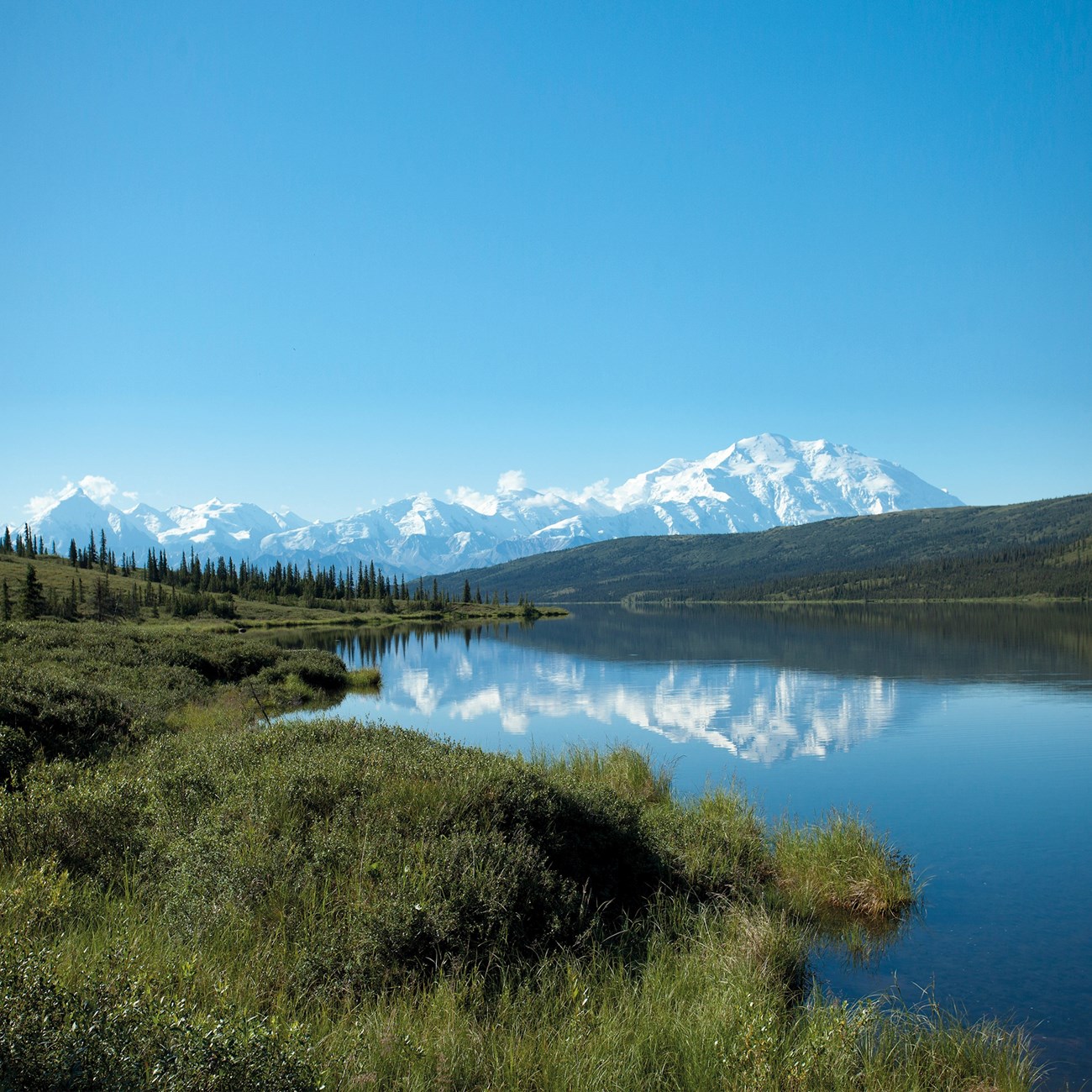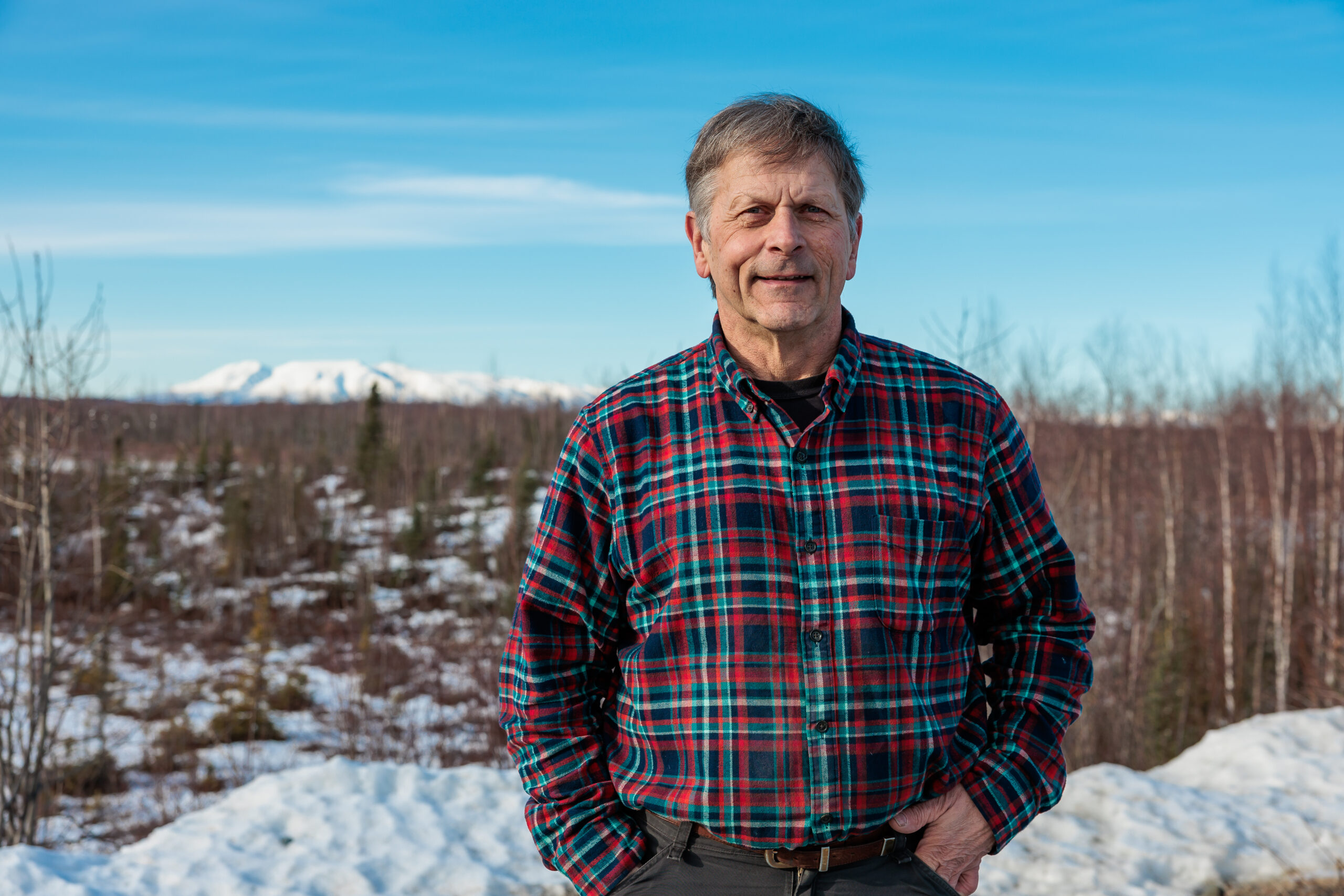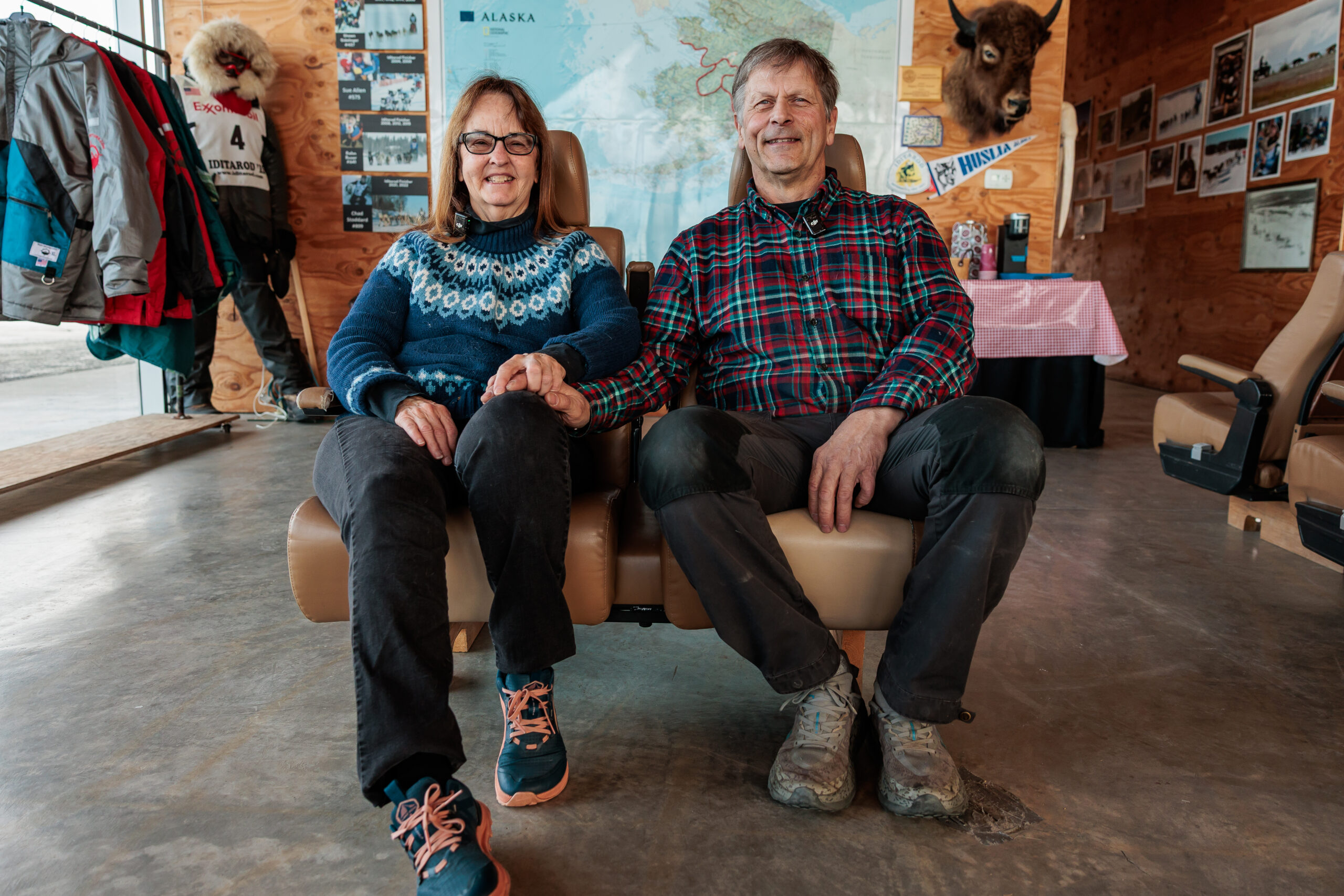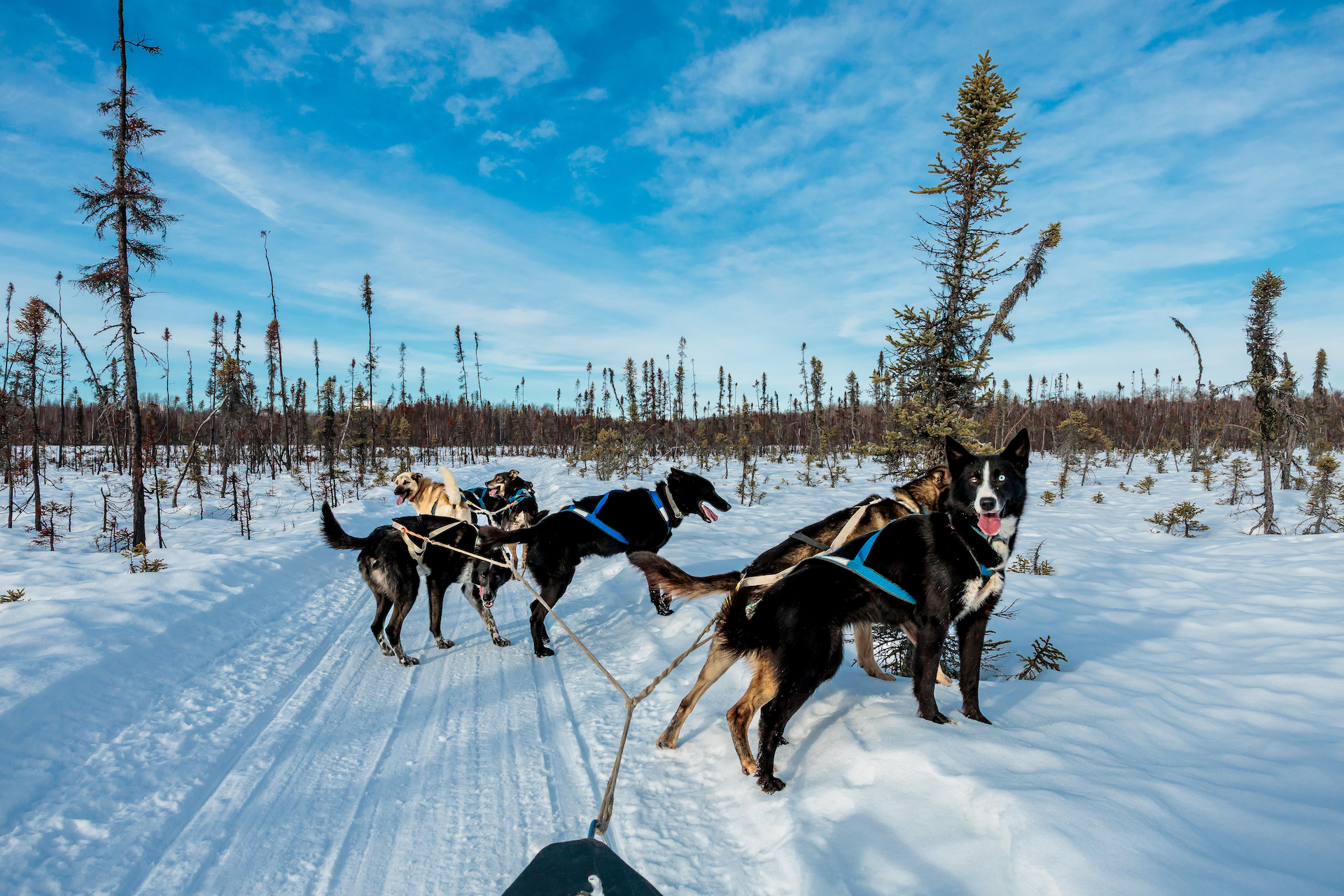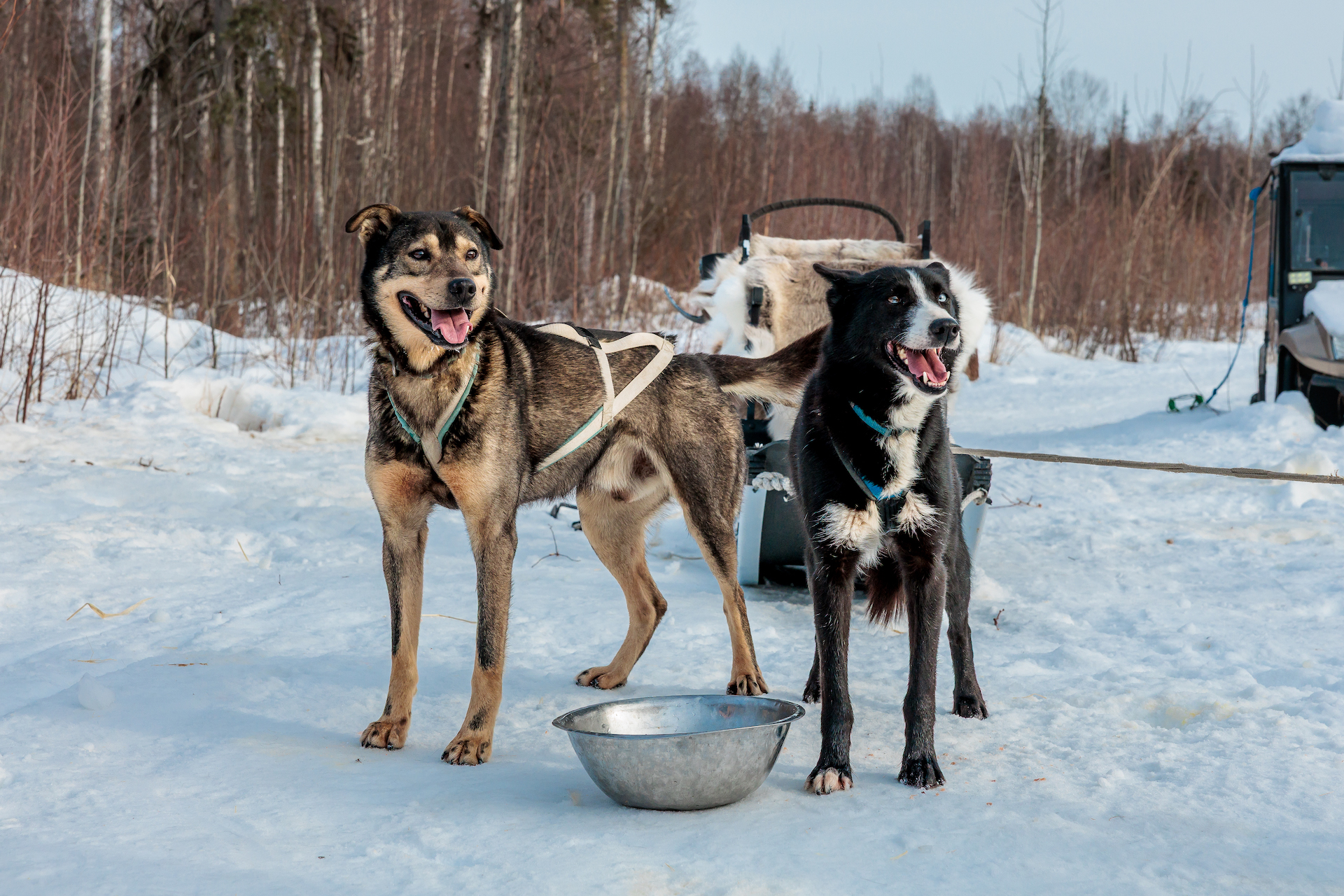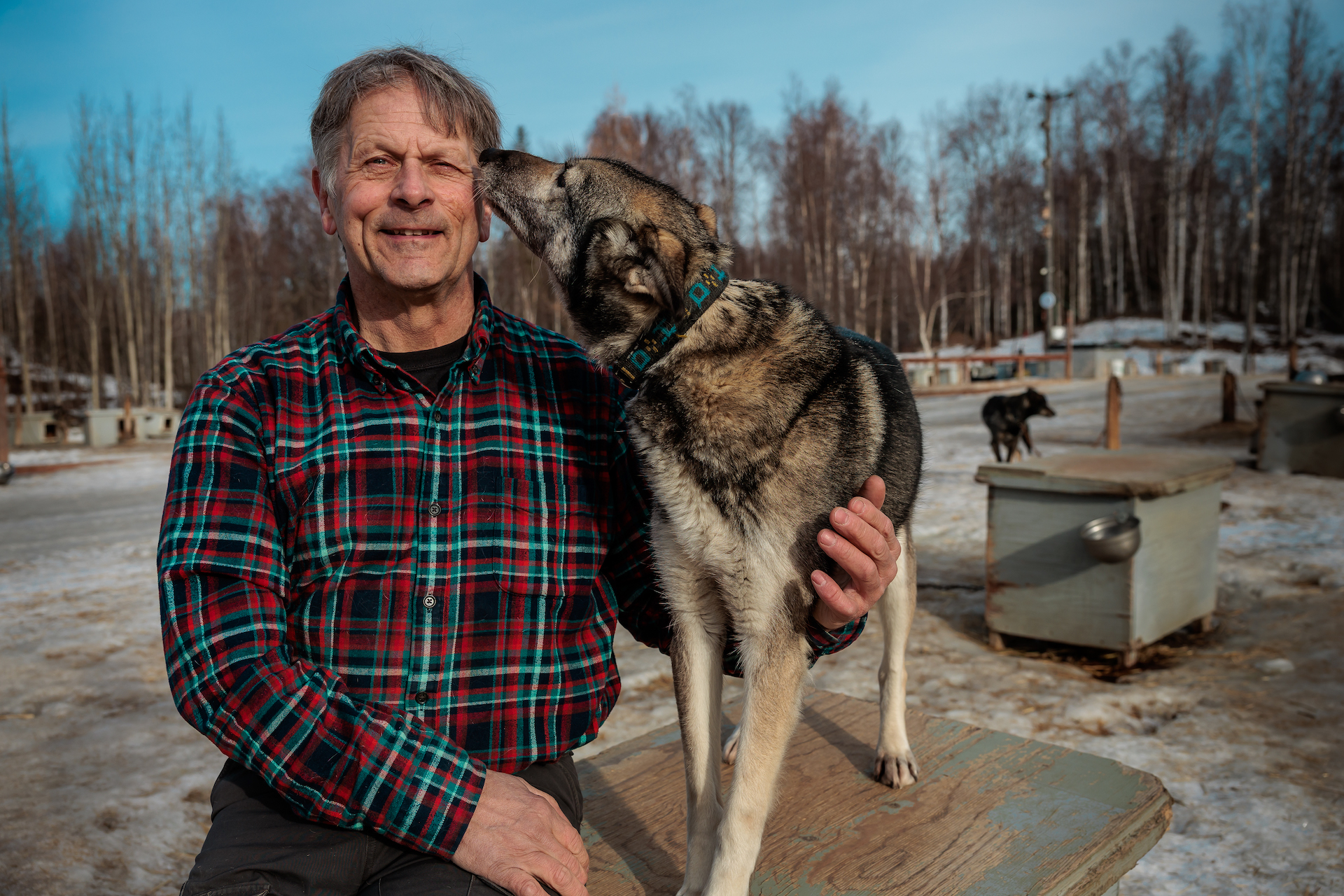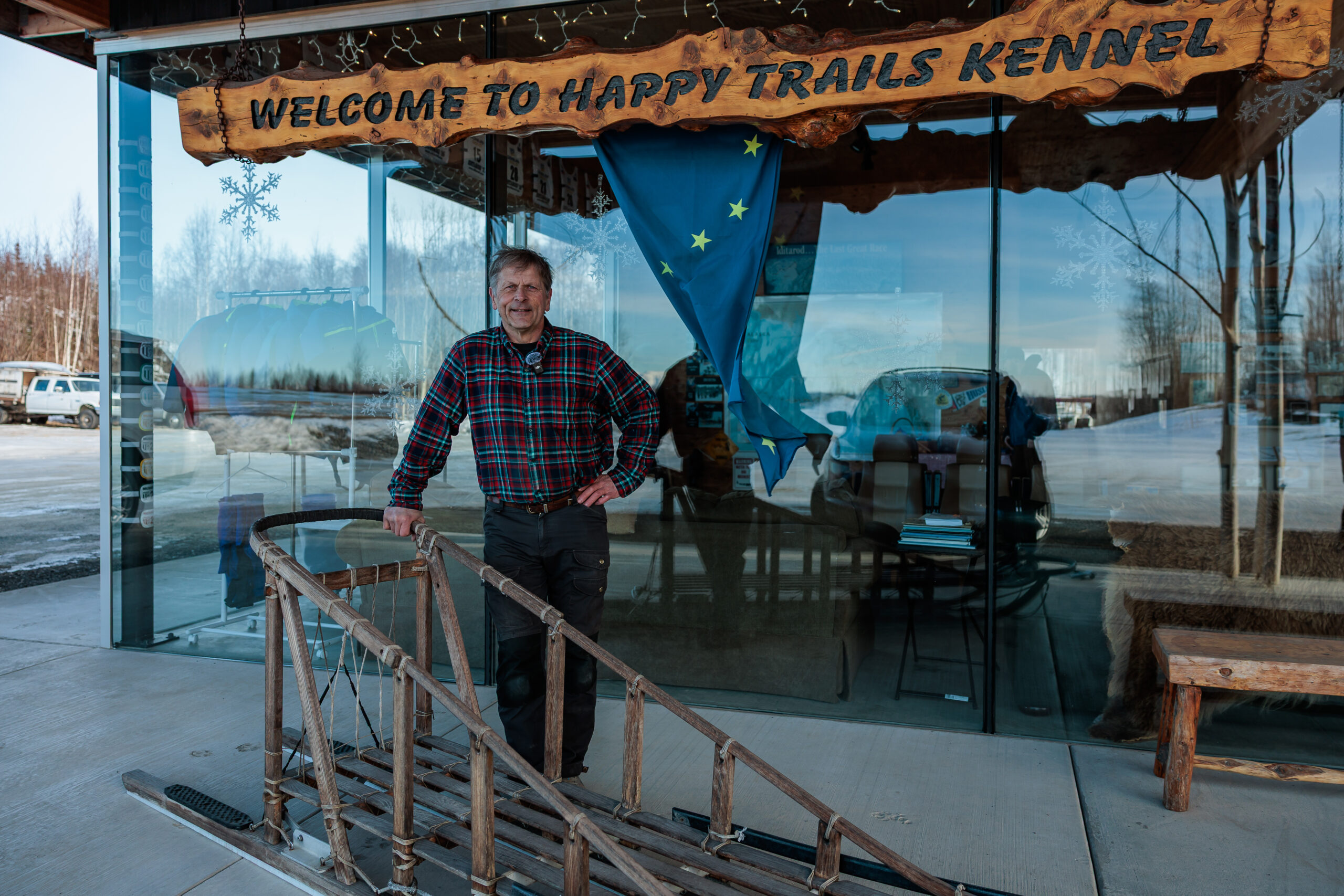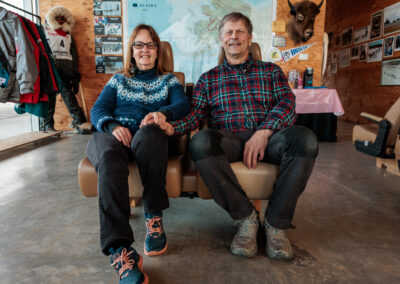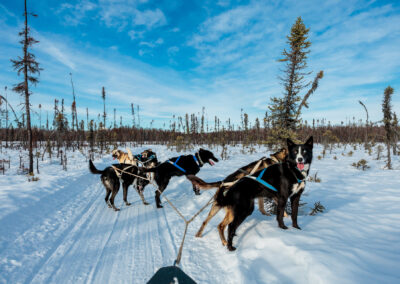8 Ways This Alaska Tour Will Fulfil Your Frontier State Fantasies
Iditarod: This is What It’s Like Competing in the World’s Toughest Sport
ENCOUNTERS
The Last Great Race on Earth
The Iditarod Trail Sled Dog Race is known as the “Last Great Race on Earth.” Traversing 1000 miles of Alaskan wilderness, from Anchorage to Nome, mushers and their dog teams race through mountain ranges, frozen rivers, dense forests and endless windswept coastline. It takes a unique person and dog team to master the challenge, with determination, resilience, dedication and passion all pre-requisites.
To find out just what it is like to race the Iditarod, we had the pleasure to speak with Martin Buser, a renowned Iditarod musher and a four-time champion of the prestigious race. Martin has raced 39 Iditarods, and for nine years, his 2002 team held the record for the fastest Iditarod by completing the race in 8 days, 22 hours, 46 minutes and 2 seconds. In recognition of his exceptional care for his dogs, Martin Buser received the prestigious Leonhard Seppala Award an unprecedented five times, honoring his dedication to the humanitarian treatment of his canine team.
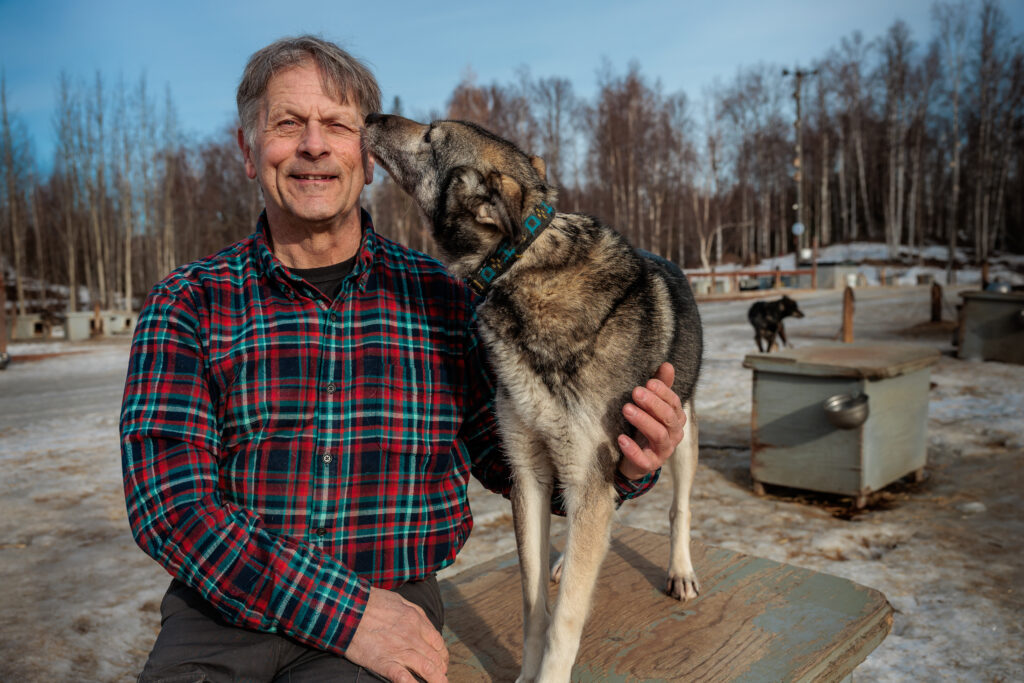
Martin has built unbreakable bonds with his dogs.
1. Life in Alaska: the moment that started it all
“For me it started in Switzerland where I grew up,” Martin tells us. “For years, in my spare time, I volunteered with people who had sled dogs – as a teenager as I couldn’t afford my own team or get any experience in dog racing. One thing led to another, and after my schooling and my military service (compulsory in Switzerland), I decided to move to Alaska, where they practice sled dog racing as a full-time profession.
“That’s how I ended up in Alaska with a mentor couple who had around 200 dogs. They welcomed me in, and I worked for them for nine months. After that time, they asked if I would like to run the Iditarod the following year. It took me about half a second to say, “Sign me up!” It felt incredible.
2. A landscape formed of special memories
“I have an incredible lifestyle here. I live with my wife; Kathy and we celebrated our 40th wedding anniversary just a short while ago. Over all these years, together we’ve built our dream.
“One very special memory is when, during one race my youngest son (who ran three Iditarods) and I traveled together towards the end of the race – father and son racing over a razorback mountain ridge. We were illuminated by Northern Lights, throwing yards-long shadows of the dogs racing along the frozen ground, and then we raced over one last hill and saw the lights of Nome welcoming us home. Although very special, magical experiences like that during the race are numerous, and a big part of the of the experience – the dogs, the interactions, the joy for the animals and nature.”
3. Q&A with Martin
What is the Iditarod?
“To explain the Iditarod, I’ll take you back 9000 years, when people first started experimenting with deliberate sled dog breeding. It was that far back that people realized that these dogs are incredible performers, and they became the mainstay of just about every household. Every family had two, three or maybe five dogs helping them travel and sustaining their semi nomadic lifestyle – People would travel during the winter to reach their spring hunting grounds, then move to summer camps, and finally return to their fall and winter camps. So, the dogs were paramount to keeping people constantly moving.
“We then evolved to more utilitarian dogs – they helped in the gold mines, helped transport supplies, gold and people in and out, travelling the famous original Iditarod trail – a network from Seward all the way to Nome.
“Lately, the last 55 years, it has become so specialized that now we have a race that goes 1049 miles from Anchorage all the way to Nome. And that’s the Iditarod Trail Sled Dog Race, the most prestigious Sled Dog event in the world.
Why is it considered such an extreme challenge?
The Iditarod is the longest race in the world, not only in terms of distance at 1,000 miles but also regarding the terrain. We start on the south side of the Alaska Range, a vast mountain range that must be both climbed and descended. Going down is even more challenging than going up, as the dogs navigate steep valleys and semi-frozen rivers, gravel bars, and sometimes stretches of tundra with no snow for miles. This leads to the extensive river systems in the interior, where the Yukon River always poses a challenge. After traversing another mountain range, we arrive at the coastal regions, which indigenous people have traveled for millennia. We then enter Eskimo country, traveling along the coast and over mountains, until we finally return to civilization at the finish line in Nome.
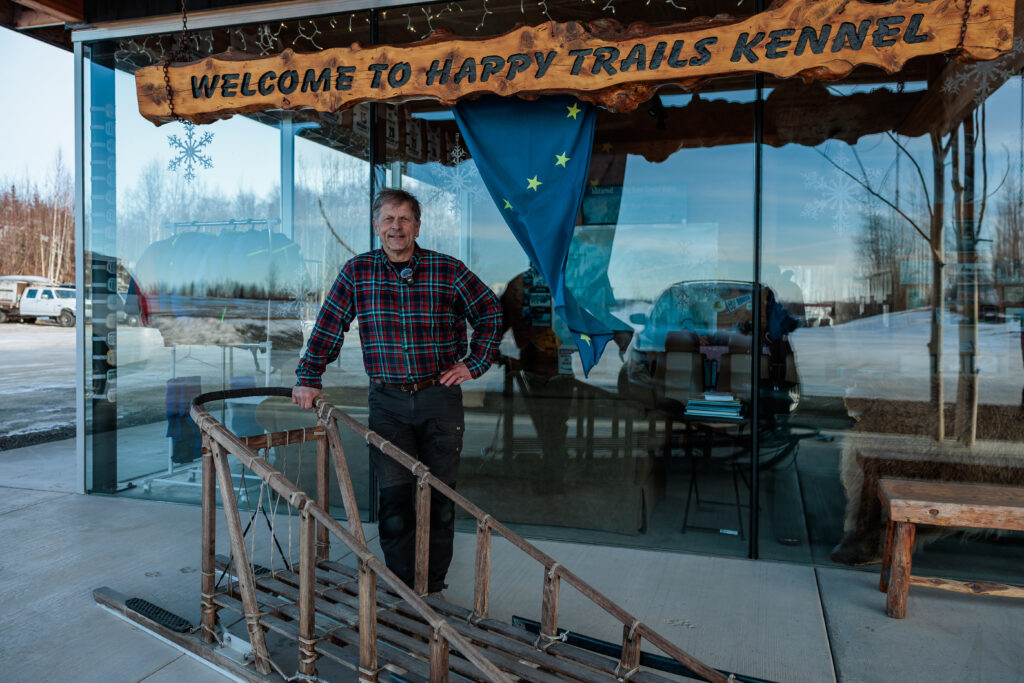
Running Happy Trails Kennels is a labor of love for Martin.
What does your day to day look like now at Happy Trails kennels?
Well, for the last 45 years, the days have really revolved around the dogs. There’s no normal day when you live in a dog kennel – there is always something that pops up with 40 to 60 animals. But the basic routine starts early in the morning, with food and water, cleaning and generally taking care of the dogs. Then the training starts. Depending on the time of the year, the length of the trading bouts vary. During summer I might just take 30 dogs and go on a walk in the wilderness. In the fall, we might hook up 12 to 20 dogs in front of a four wheeler. In the winter time, we start hooking them up on the snow, on the sleds, and the increasing distances are dependent on what kind of races we’re aiming for.
Now after 39 Iditarods, my life has actually slowed down a tiny bit because I no longer need to focus on those long distance. Now we cater more to the tourists that come and enjoy the dogs every bit as much as we do by getting a ride where we take them 10 or 15 miles out into the wilderness.
Before your first Iditarod, how long do you have to train?
Training for the Iditarod is an ongoing thing. Having sled dogs is a year-round commitment – they need to be challenged on an ongoing basis. They need more than food, water, cleaning and maintenance, they need to be stimulated and occupied with exercise, play and stimuli. In the summer, it might get too hot for the dogs to do a lot of exercise We have to be very careful because if the dogs have one enemy, it’s the heat. If it is too warm their body temperature could get elevated to a dangerous level. So we tailor our exercise bouts, our training and our stimuli according to their needs and the temperature, and, of course, the time of the year.
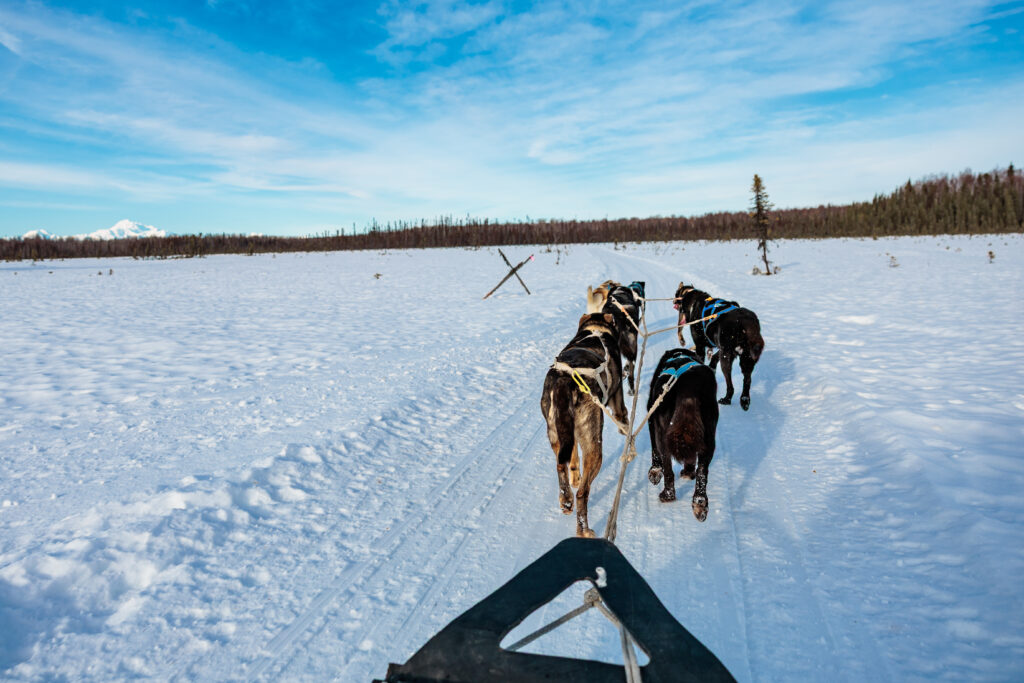
Martin’s dogs need a rigorous exercise routine.
The first time you raced the Iditarod, how did you feel at the start line?
You know, the first one or two Iditarods kind of blend together there. There is so much preparation, so much worry and so much anticipation going on that the butterflies actually block out your memory!
However, I remember a few incidents where I was thinking “Oh, nobody told me about that. I didn’t know there was going to be bare ground. I never heard that the trail was that steep or that fast or that shallow or that deeper water.” You wonder, “how come nobody ever talked about that?” But it’s hard to explain in detail a 1000 mile trail, and what you encounter is often dependent on the annual the weather patterns. Some years the trail is pretty forgiving, some years it is is an ultimate challenge.
Save up to $3,000* per couple on your first Premium Tour
Plus receive latest offers, travel inspiration, and discover how your travels will make a positive impact. Together, WE MAKE TRAVEL MATTER®. Subscribe NowAnd how did you feel at the finish line on that first race?
Evern now I remember the finish line was a momentous occasion, and I was pretty excited to finally get there! However, I also was thinking I could do this a little faster. If I had prepared a little better for this situation, or if I had a little better sled or maybe a little faster dog team, I could do pretty well, and so that morphed into my second challenge.
The second time I do the Iditarod I was mentored again, and during this I had a few epiphanies and then formulated my own plan. The last 37 I raced exclusively with dogs that I have raised from puppyhood on. My new philosophy that going on the trail with your kids – just imagine winning the European soccer championship with all your brothers and sisters and nieces and nephews on your team – that’s kind of how I look at the Iditarod with my dogs, like my kids, and I won the Iditarod a few times.
During the race are you calm and collected, or was it chaos?
At first, you’re so full of adrenaline because the 11 and a half months of preparation have finally gotten you to the starting line – you’re so jazzed up that you cannot relax. Three days into the race, you’re still somewhat running on the adrenaline, but you’re starting to feel a little fatigued, and a week after you start hallucinating while you’re driving down the trail, you’re seeing things that are no longer there or never were there! You might fall asleep, so you tie yourself to the sled. The, not if, but when you fall off, you’re still attached to your dog team! That’s one of the many skills that musher has to have, to be able to deal with the lack of sleep in order to succeed.
Your 2002 team held the record for the fastest Iditarod for nine years. What do you remember about that race?
The 2002 Iditarod was particularly momentous for me. While every Iditarod is special, this one held deeper significance as I was still an immigrant from Switzerland, holding a green card and fully embracing my life in Alaska. The events of 9/11 inspired me to prove to my children, then 12 and 14, that I wanted to defend this country, so I decided to become a naturalized citizen. I was scheduled to be naturalized under the burled arch in Nome by a judge.
In addition to achieving a historic finish—becoming the first to complete the race in under nine days—I also had the honor of being naturalized at the finish line. We had planned a trip home from Nome on snowmobiles, retracing the race route with my wife and two sons, flying a large American flag to celebrate both our victory and my new citizenship. It was an unforgettable and magical experience.
How do you sleep when racing for multiple days?
Racers that are ultra-competitive don’t sleep more than maybe two, possibly three hours a day, broken up into hour, hour and a half chunks. The reason is that when the dogs run about 50% of the time. A good, rough schedule might be six hours of running and six hours of resting. The dilemma comes in that we drive the dog team – we steer the sled, tell the animals where to go, pick the route. Often, we need to pedal or run behind the sled a little bit. Then, to rest the dogs, we park them at a checkpoint or sometimes in the middle of nowhere.
The for the next two and a half to three hours, we will take care of the dogs by carrying straw for them to sleep on, melting snow to cook their food and massaging their bodies. We also take care of all the equipment. When that is done, we feed ourselves! By that time, I might be four hours into my rest stop, and my competitor might already be ready to get going. So, I might quickly grab a 20- or 30-minute nap, and then we have to prepare the dogs and equipment to get going again. So, it’s a grueling, repetitious schedule of resting and running.
Has anything ever gone wrong while racing?
The more appropriate question might be: has there ever been a race where nothing went wrong? You can’t complete 1,000 miles without encountering issues like breaking part of your sled, a dog getting injured, losing the trail, or equipment failure. Drivers may also face challenges like illness, falling into water, getting lost in a storm, or sustaining injuries. In my experience of 39 races, there has never been a single event that went perfectly smooth.
Success lies in the ability to overcome obstacles and adapt on the fly. While it’s easy to make a plan, the true test is how you respond when things deviate from that plan.
When it is just you and the dogs racing through the wilderness, can you describe that connection you feel with the world?
The connection I have with my animals is symbiotic. I’m one of them, and they’re one of me. Realizing 100% that without them, I would never get to the finish line. Also understanding without me, they would never get the proper massages, food and the protective gear that we put on. So it’s a symbiotic relationship that in their mind, if I do everything right, in their mind, I’m just one of them. They really don’t understand that I don’t have four legs and a fluffy tail that I can wag.
I provide my dogs with direction, love, and guidance, and they look to me asking, “What’s next?” They eagerly implement my instructions. This creates a strong bond between us, especially since I’ve raised all my dogs myself.
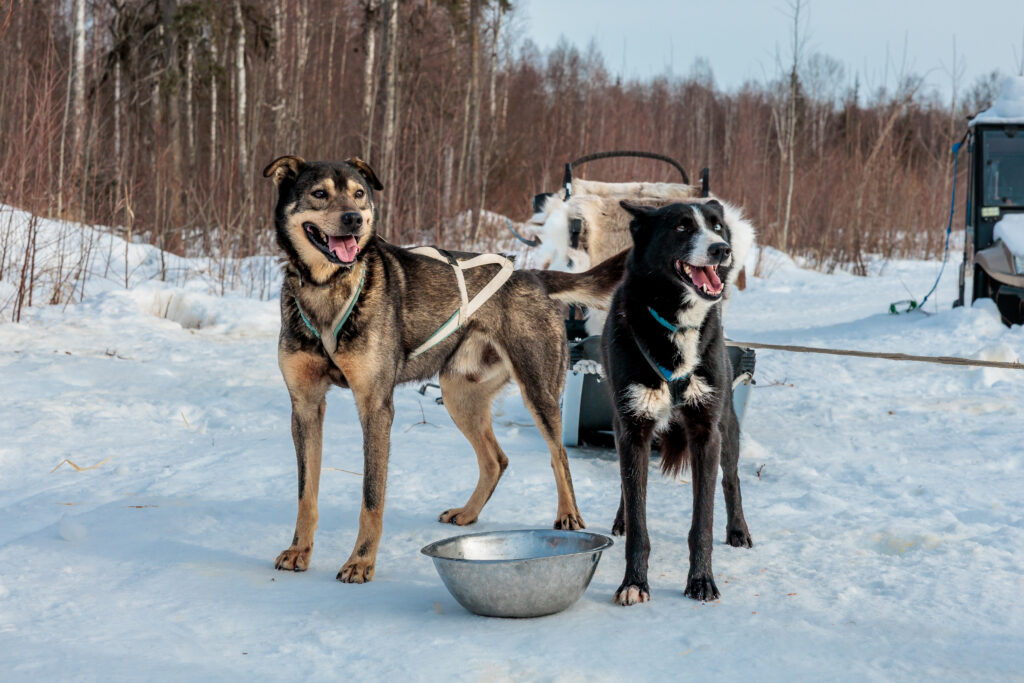
Martin has raised all his dogs himself.
What is your motivation during the race?
Well, the motivation comes from within. It is a big part of the pride that we have. In my case, my main motivator always was that these are my kids, my family. I’m going to prove to the world that I have raised the best dogs – the healthiest, strongest and happiest. The term Happy Trails Kennel, the name of my business is not by accident. It’s totally by design. I wanted to show everybody that my dogs are the happiest out on the trail, because then they have already won. Now, if they happen to win races, that’s a bonus. That’s the philosophy of the dogs out on the trail, and what drove both the myself and my team forward all those Iditarod years.
See the majesty for Alaska’s landscapes and people for yourself, in premium style, on our Jewels of Alaska tour.
LIKED THIS POST? SHARE WITH YOUR COMMUNITY
